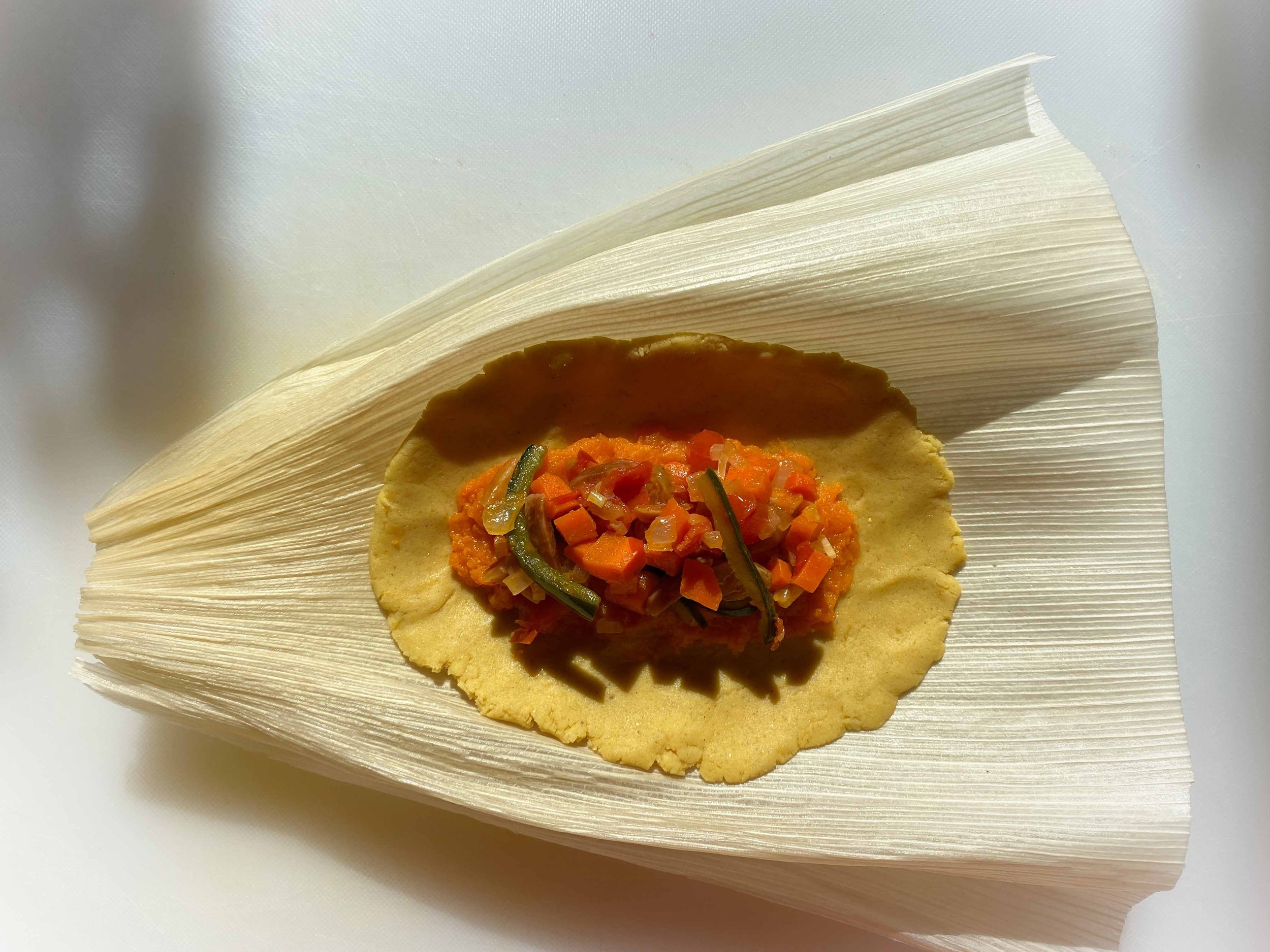Olivia Lopez’s Tips for Brilliant Tamales
• There are myriad videos suggesting that after a long period of mixing the masa for tamales, you know it is ready when a small amount dropped in water floats to the top. In our experience, it doesn’t work – our masa was definitely ready (and it made great tamales), but it didn’t float. What’s important is to work the masa enough to make sure all the ingredients are thoroughly combined.
• Wrappers need to be softened before you roll the tamales. For corn husks, a 15-minute bath in water does the job. Shake off excess water before filling. For banana leaves, cut the leaves into large rectangles. Use tongs to hold a rectangle by the corner about 4 inches over a gas burner until the entire leaf turns bright green (just a few seconds, and it’s like magic). If you have an electric stove, heat a comal, griddle or large skillet (dry), lay the leaf flat on it and press gently till it turns bright green. Flip to get missed spots if necessary; do not let it brown.
• When you’re rolling a tamal, imagine that you’re rolling a burrito — that way the filling will be nice and compact. It’s not essential that the masa completely encloses the filling, as long as the tamal is fully rolled and protected by the wrapper, whether banana leaf or corn husk.
• If you’re making two types of tamales using one type of wrapper — such as vegan tamales and duck mole tamales, both in corn husks — use a tie in the middle to indicate the vegan tamales and ties only on the ends for the duck tamales. Or use a different type of tie (maybe butcher twine) for one of the types. That way eaters will know which is which.
• Don’t worry if you don’t have a steamer – you can improvise one by perching a plate inside a large pot. Put something under the plate to keep it elevated over plenty of boiling water – we recently used three tin cups. A small metal bowl or two can work, too. Fill with water so the water comes just underneath the plate.
• Whether you’ve wrapped your tamales with corn husks or banana leaves (or some of each), line the steamer with soaked corn husks, making sure they cover the place where the steamer insert meets the edge of the pan, and go up the sides a little. That ensures that water boiling hard from below doesn’t sneak up into the tamales. Leave a little hole not covered by husk, though, so you can check to see if there’s still water in the pot after it’s been boiling a long time.
• After you’ve loaded your steamer with tamales, cover it and bring it to a boil over high heat, then turn the heat to medium – high enough to keep the steam going, but not so high that the water will evaporate too fast.
• Be very careful when you open the steamer to check doneness – keep your face well away and your arms protected from the hot blast of steam that’ll greet you when you open the pot. Remove the lid just partially first, to let most of the steam escape before checking the tamales. (Don’t burn your nose the way Olivia did once!)
• To test doneness of corn-husk-wrapped tamales without opening a tamal, use a cake-tester or toothpick to check. Insert the pick straight through the corn husk. If it comes out clean, they’re probably ready. (You can’t do this with a banana leaf.) Otherwise, when you think they might be done, remove one and let it sit on a plate for 5 minutes or so before checking; as it rests, it’ll firm up. Then open it and peek inside: If it’s done, it’ll hold an impression of the wrinkles made by the husk or leaf.
• To reheat, do not use a microwave, as the tamales will dry out. Instead, steam them again for 15 minutes or so. If they’re frozen, you can steam them straight from the freezer for 25 to 30 minutes. If you are only steaming a few, a wok with a bamboo steamer insert works really well.
— Leslie Brenner and Olivia Lopez


